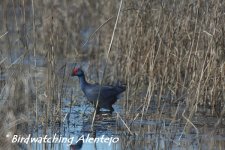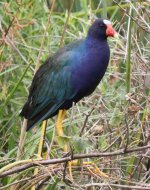Bert
Birdwatchingalentejo.com
I have been away for a while but now I am back.
Spotted a Purple Swamphen on the 9th of January at the Santo Andre lagoon in the Alentejo region of Portugal.
To see all birds spotted have a look at my website http://birdwatchingalentejo.com/blog or for more information http://birdwatchingalentejo.com B
Bert
Spotted a Purple Swamphen on the 9th of January at the Santo Andre lagoon in the Alentejo region of Portugal.
To see all birds spotted have a look at my website http://birdwatchingalentejo.com/blog or for more information http://birdwatchingalentejo.com B
Bert
Attachments
Last edited:







